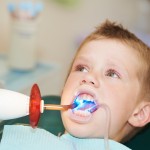
There is good evidence for the effectiveness of fissure sealants for the prevention of caries (Ahovuo-Saloranta et al 2013). Sealant retention is important in maintaining this benefit and it has been suggested that use of adhesive systems prior to sealant application may improve retention.
The aim of this review was to assess whether self-etch adhesive sealants were as effective as traditional acid etching, with or without the application of adhesive system.
Methods
Searches were conducted in the Cochrane Central Register of Controlled Trials (CENTRAL), Medline and ClinicalTrials.gov databases. Randomised controlled trials (RCTs) evaluating the effectiveness of self-etch systems compared to acid-etching technique prior to sealants in occlusal surfaces and published in English were considered. Two reviewers independently selected studies and assessed quality and risk of bias and meta-analysis conducted.
Results
- 5 split-mouth studies were included.
- Studies were conducted in Egypt, Pakistan, Scotland, Turkey and the United States.
- Follow up periods ranged from 6 to 24 months.
- 1 study involved primary molars, 4 permanent molars.
- There was a significantly lower failure rate in the control group (acid-etching technique). Odds ratio = 4.46 (95% CI 1.31, 15.20); P < 0.0001; I2 = 85%.
Conclusions
The authors concluded:
Occlusal sealants applied with self etch systems show lower retention throughout time than sealants applied in the conventional approach, regardless of the use of adhesive systems.
Comments
The authors have employed a broad search strategy employing a number of databases although the restriction of included studies to those published in English may have resulted in excluding some relevant studies.
Only 5 split-mouth studies could be included with the largest of them including 91 teeth (range 18-91 teeth). The included studies also demonstrate important heterogeneity of materials, evaluation criteria and follow up times. The age of sealant application also varies with 1 study involving primary teeth and another involving young adults aged 18-21. These issues should be taken into consideration when interpreting the findings of this review.
Links
Primary paper
Botton G, Morgental CS, Scherer MM, Lenzi TL, Montagner AF, Rocha RO. Are self-etch adhesive systems effective in the retention of occlusal sealants? A systematic review and meta-analysis. Int J Paediatr Dent. 2015 Nov 21. doi:10.1111/ipd.12214. [Epub ahead of print] Review. PubMed PMID: 26590954.
Other references
Review protocol on PROSPERO database
Ahovuo-Saloranta A, Forss H, Walsh T, Hiiri A, Nordblad A, Mäkelä M, Worthington HV. Sealants for preventing dental decay in the permanent teeth. Cochrane Database of Systematic Reviews 2013, Issue 3. Art. No.: CD001830. DOI: 10.1002/14651858.CD001830.pub4.

Are self-etch fissure sealants more effective? https://t.co/PPCpjBVBho
Fissure sealants – are self-etch sealants more effective? https://t.co/PPCpjBVBho
¿Es útil utilizar un adhesivo autograbador en lugar de un ácido antes de un sellado? No! https://t.co/P7MrG3Pqtw https://t.co/A5WwND96Aw
Lower failure rates in fissure sealants placed with acid-etch technique
https://t.co/PPCpjBVBho
Occlusal sealants applied with self etch systems show lower retention https://t.co/PPCpjBVBho
Higher failure rates when using self-etch systems prior to fissure sealants https://t.co/PPCpjBVBho
Don’t miss -Fissure sealants – are self-etch sealants more effective? https://t.co/PPCpjBVBho
Why are we still researching fissure sealants with retention as the outcome measure? Surely the outcome we wish to avoid is caries. The few studies that use this as the outcome measure found that GIC is a far better fissure sealant, even if you can’t see it a few Years later.